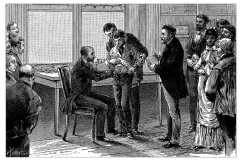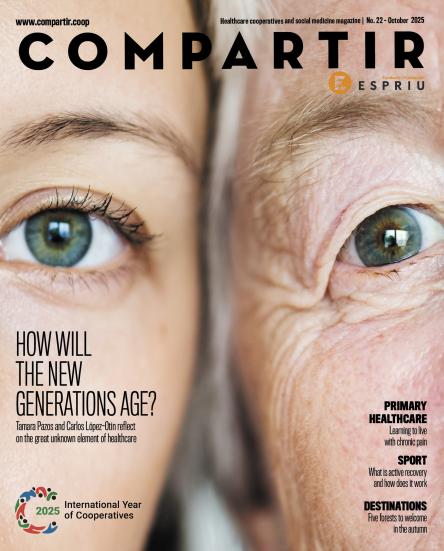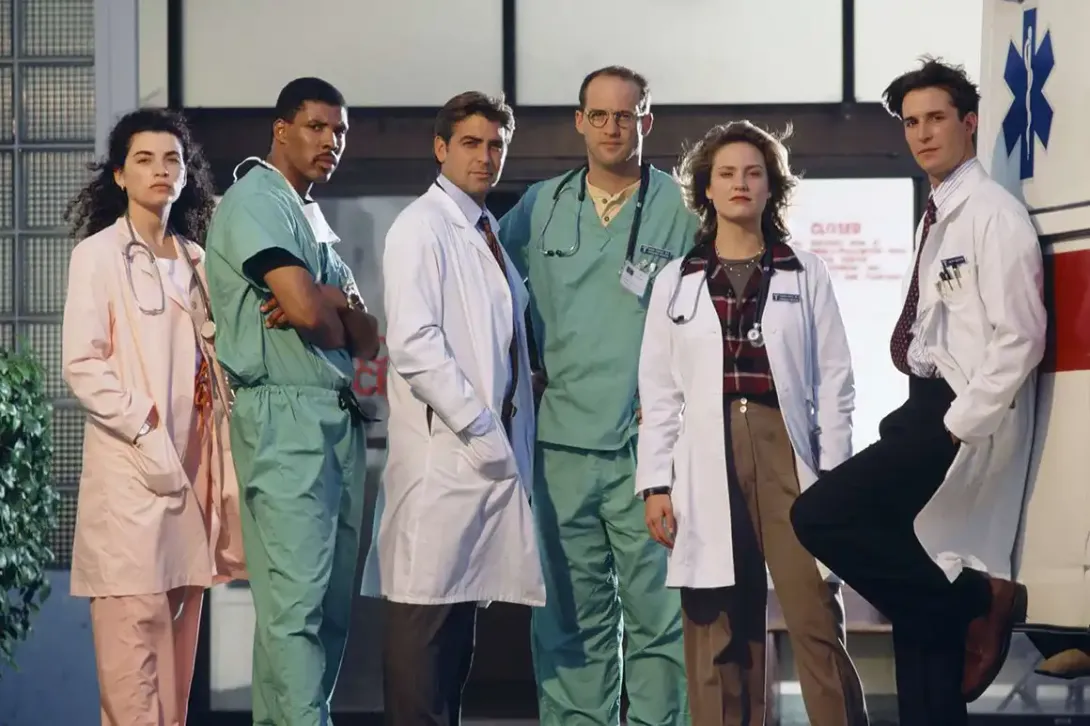
White coats under the spotlights
From the sinister doctor at the beginning of film-making to the charismatic stars of the current television series, the screen reflects the complexity and evolution of this fundamental profession.
The cinema and the television have both tackled the figure of the doctor on many occasions. As occurs in literature, the views have been highly contrasting. In the first days of the cinema, with the birth of the European avant-garde, the influx of gothic romanticism was particularly intense, with the presence of the mad doctors of expressionism and later on, in the Universal or Metro-Goldwyn-Mayer Hollywood studios’ horror films.
In the films made during the Weimar Republic, the scientist was presented as a figure who often was worrying or threatening. In Das Cabinet des Dr. Caligari (The Cabinet of Dr. Caligari, 1919), by Robert Wiene, the patients of a mental hospital showed true fear of the doctor in charge of the institution. The film showed an interesting ambiguity: was Dr. Caligari truly evil or was what we were seeing just the distorted point of view of an alienated main character?
From sinister scientist to selfless doctor
At the other extreme, classic films contributed to establishing the image of the humanist, vocational doctor, capable of selflessly devoting himself when the occasion required it, even when they are generally misunderstood. This is the case of the star of Doctor Bull (1933), by John Ford; a likeable country doctor played by Will Rogers who begins to be called into question in his little community due to his frequent visits to a widow… until there is a typhoid epidemic and they all see how important his presence will be for survival.
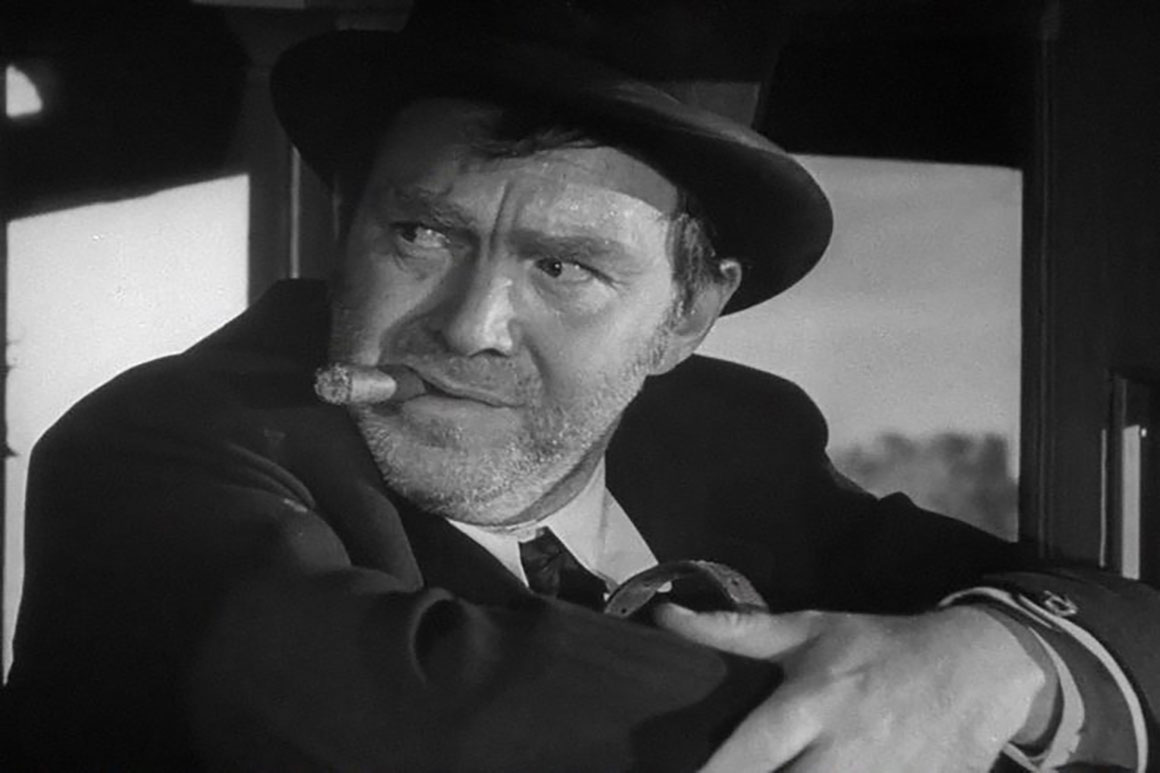
'The Stagecoach' (1939)
In these films by Ford, the doctor is a regular presence, almost always seem with complicity, who at times is the star of emotional episodes of redemption, as occurs in the priceless Doc Boone (Thomas Mitchell) in the western masterpiece The Stagecoach (1939). In European films, we can find another good example of a professional devoted to his work. In the French film Il est minuit, docteur Schweitzer (It is Midnight, Doctor Schweitzer, 1952), by André Haguet, the starring doctor fights obstinately to eradicate different diseases in French Equatorial Africa, managing to found a hospital in which he will look after thousands of patients.
White-coated starts
There are actors who seem particularly comfortable when dressed in a white coat. This is the case of the young Dirk Bogarde, who in the 1950s starred in films such as Doctor in the House (1954), Doctor at Sea (1955), Doctor at Large (1957) or The doctor’s Dilemma (1958). Bogarde’s appearance sealed the image of the medical professionals as attractive, friendly and dapper, which would then be continued by American television series such as General Hospital, which first appeared on screens in 1963 and continues to be shown now, or the later series, ER.
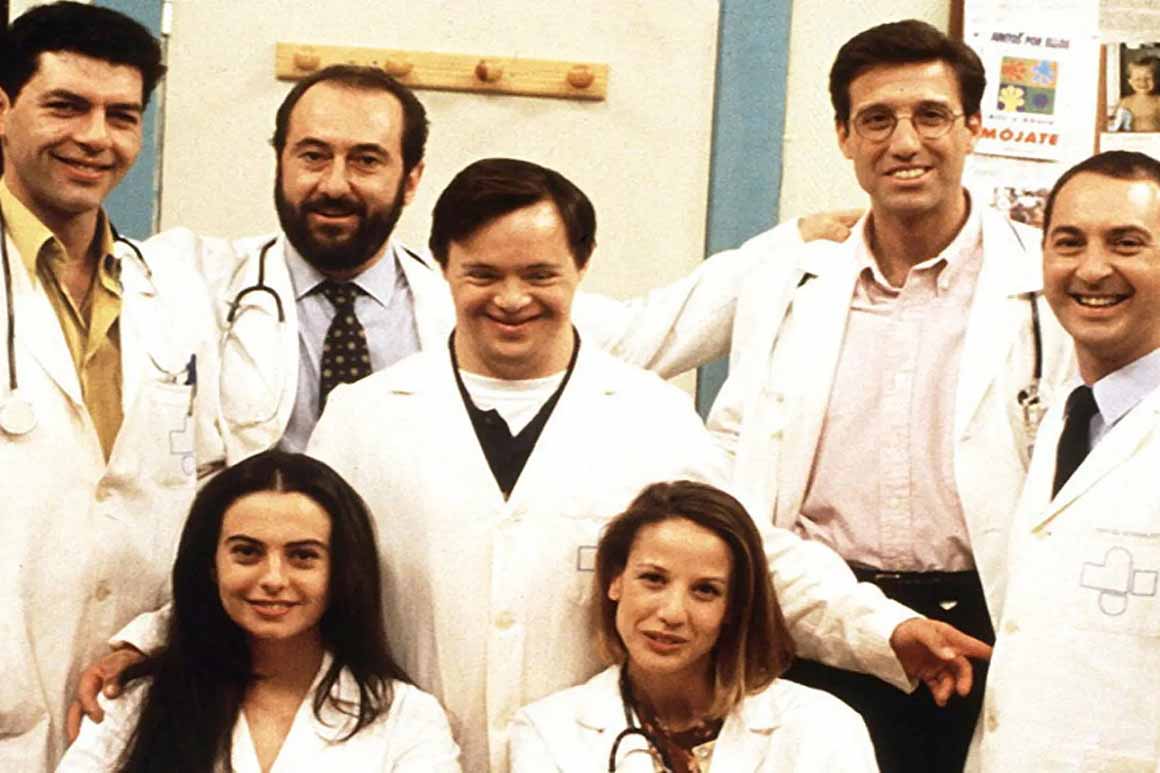
'Médico de familia' (1995-1999)
In Spain, at its most successful moment Médico de familia (Family doctor) the series created in the 1990s by Emilio Aragon contributed, as did its predecessors, to awakening different academic and professional vocations amongst the young generations. In the 21st century, we find an interesting contrast between the short-tempered, brilliant Dr. House, played by Hugh Laurie and the young autistic surgeon who is played by Freddie Highmore in The Good Doctor.
Eccentric, charming, real
But not all the doctors on the screen are as seductive as Bogarde or George Clooney, the most famous actor who started his career in the famous series, ER. Some have a heart-warming, absent-minded aspect, a permanently distracted appearance as shown by Robin Williams in Awakenings (1990), where he plays the alter ego of the famous Dr. Oliver Sacks, or in Patch Adams (1998), a film based on a true story of a professional who revolutionised the official medical community by applying unique therapies based on laughter to relieve the suffering of cancer patients.
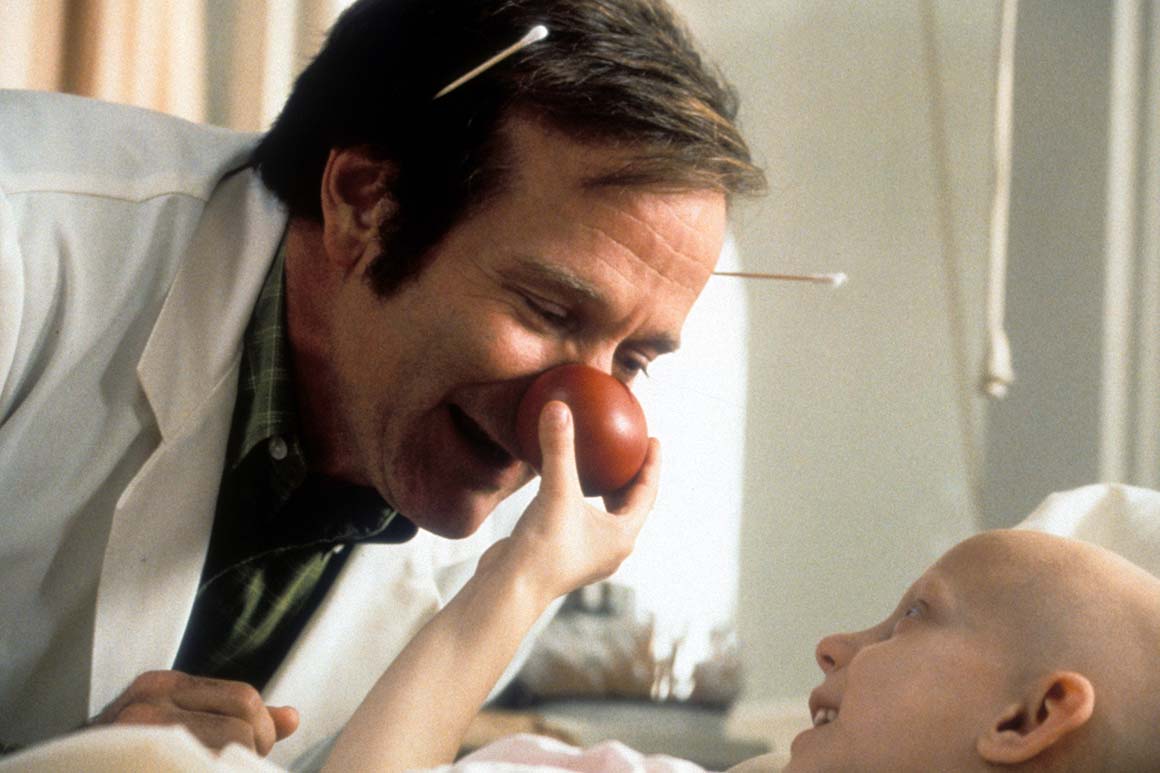
'Patch Adams' (1998)
One of the most interesting portraits in the world of medicine can be seen in the recent French film Hippocrate (Hippocrates: Diary of a French Doctor, 2014), co-written and directed by a doctor in real life, Thomas Lilti, who takes us, in a much more naturalist way, into the arduous road of learning experienced by a young resident doctor in a Paris hospital.
All these titles and many more, are representative of the interest that medicine continues to generate in the area of fiction. The medical profession brings together a series of challenges and dilemmas of different importance – scientific, social, moral, etc, which the reflection from different fields of expression provokes.
